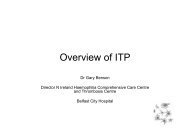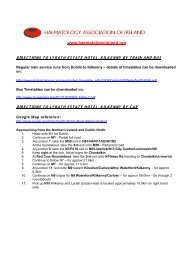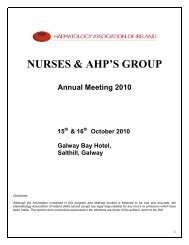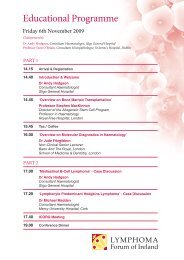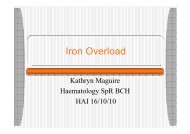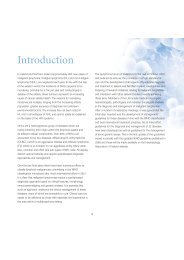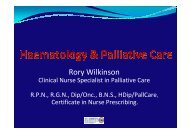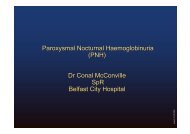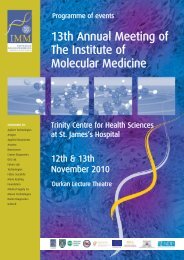Guidelines on Diagnosis and Treatment of Malignant Lymphomas
Guidelines on Diagnosis and Treatment of Malignant Lymphomas
Guidelines on Diagnosis and Treatment of Malignant Lymphomas
You also want an ePaper? Increase the reach of your titles
YUMPU automatically turns print PDFs into web optimized ePapers that Google loves.
Potential pitfalls<br />
a. Failure to investigate a mediastinal mass urgently,<br />
<strong>and</strong> failure to start treatment promptly.<br />
b. Failure to assess b<strong>on</strong>e marrow with morphology,<br />
immunophenotyping <strong>and</strong> molecular analysis.<br />
c. Failure to recognise tumour lysis syndrome risk.<br />
<strong>Treatment</strong><br />
Patients are treated <strong>on</strong> ALL type regimens (eg UKALL XII) for<br />
inducti<strong>on</strong> <strong>and</strong> c<strong>on</strong>solidati<strong>on</strong> (usually 3-4 m<strong>on</strong>ths <strong>of</strong> intensive<br />
treatment) with CNS directed prophylaxis followed by stem cell<br />
transplantati<strong>on</strong>. Asparaginase may be particularly useful in<br />
treating patients with TLyL <strong>and</strong> it is advisable to use regimens<br />
which include this agent. There is no clear survival difference<br />
between autologous <strong>and</strong> allogeneic transplantati<strong>on</strong>. The relapse<br />
rate is higher after autologous transplantati<strong>on</strong> <strong>and</strong> therefore<br />
patients with high risk features (such as marrow involvement)<br />
<strong>and</strong> a matched sibling d<strong>on</strong>or should be <strong>of</strong>fered an allogeneic<br />
transplantati<strong>on</strong> in first remissi<strong>on</strong>. Young adults (up to the age <strong>of</strong><br />
25) are increasingly being treated <strong>on</strong> paediatric-type protocols<br />
with intensified chemotherapy <strong>and</strong> no transplantati<strong>on</strong>, however<br />
l<strong>on</strong>g follow up is not available for this treatment approach.<br />
Resp<strong>on</strong>se Evaluati<strong>on</strong><br />
CT scan <strong>of</strong> affected area after initial chemotherapy. B<strong>on</strong>e marrow<br />
<strong>and</strong> CSF evaluati<strong>on</strong> (if involved at diagnosis) after initial<br />
chemotherapy. Complete restaging within 2 weeks <strong>of</strong> stem cell<br />
transplantati<strong>on</strong> (SCT) <strong>and</strong> at 100 days post SCT.<br />
Follow Up<br />
Two m<strong>on</strong>thly follow up for 1 year, 3 m<strong>on</strong>thly follow up for 1 year,<br />
6 m<strong>on</strong>thly for 1 year <strong>and</strong> then annual follow up. CXR, FBC<br />
<strong>and</strong> biochemical pr<strong>of</strong>ile at each follow up visit up to 2 years<br />
<strong>and</strong> then as indicated.<br />
Patients who relapse with T-ALL <strong>and</strong> are transplanted in<br />
CR2 have a poor prognosis <strong>and</strong> so the initial management<br />
decisi<strong>on</strong> is crucial.<br />
44



